A Certified Naturally Grown Farm - Saint Marys, Pennsylvania
A Fresh Start: 2025 Hop Season in Full Swing
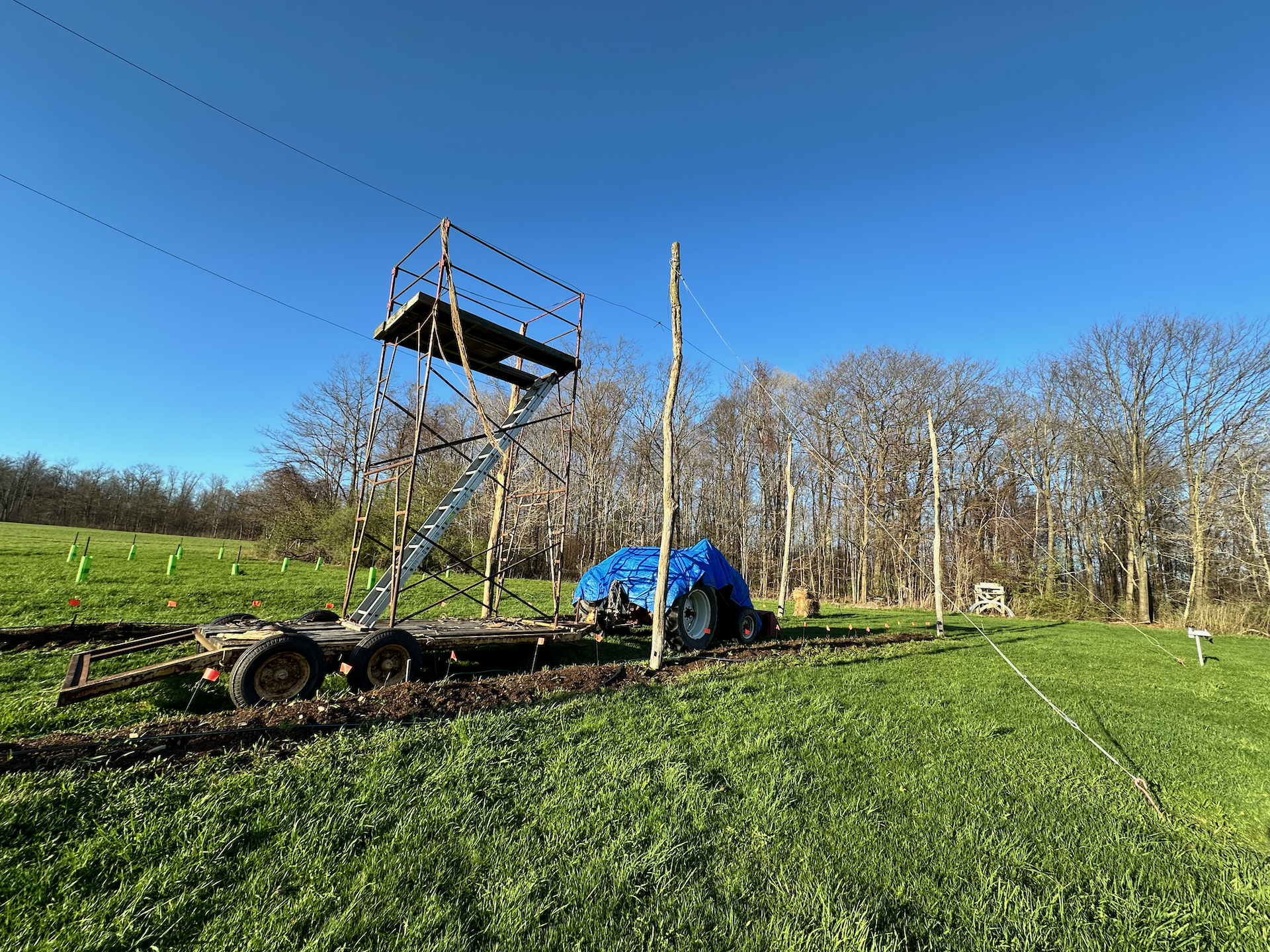
Emergence and Flame Weeding
We play this “game” every Spring; “when will the hops show themselves”?
This Farmer will admit he does not possess the greatest memory, not by a long shot. However, at this point, I feel like I have a pretty good recall for what needs done and when here in the hop yards. So when the bines hadn’t started poking their heads above the ground by early April, to say I was “concerned” doesn’t come close.
Was there something in the mushroom compost we put down at the end of Fall last season? Was there not enough snow to insulate the crowns over Winter? Has it been too cold so far this Spring? I was freaking out a bit to the point I felt like by April 5th, the entire season was already lost!
As is evidenced by this blog, I take A LOT of photos through the seasons. So much so, it becomes a research tool for us, much like the records we keep annually for our CNG certification. Why it didn’t strike me to just review previous season’s photos for this time of year, I’m not certain, but I didn’t until I’d already scared myself silly through the latter part of April.
And then I did, and then all was good – we were indeed on schedule for the growth of the bines for this time of year. So on it’s own, that revelation felt good, but when I realized in actuality we were (for the time being anyway) ahead of schedule as when I’d put the work schedule together, next up was flame weeding. Most Springs, by the time the schedule allows for that, that hops are a bit further along than we’d like because that means by the time the bullshoots die back and the good shoots start going, it’s a shorter time frame to the Solstice.
The Summer Solstice is when they top out on the trellis, and then focus more on sidearms and then burrs, which then become the hop cones. There isn’t a great deal of complicated math in this job, it’s a basic formula; the taller the bines, the more side arms get produced, which means more burrs for more cones for more beer. Long story short, things need to be kept as close to the yearly schedule as possible, and so far, we’ve been slightly ahead of the curve.
Side Tilling and Compost
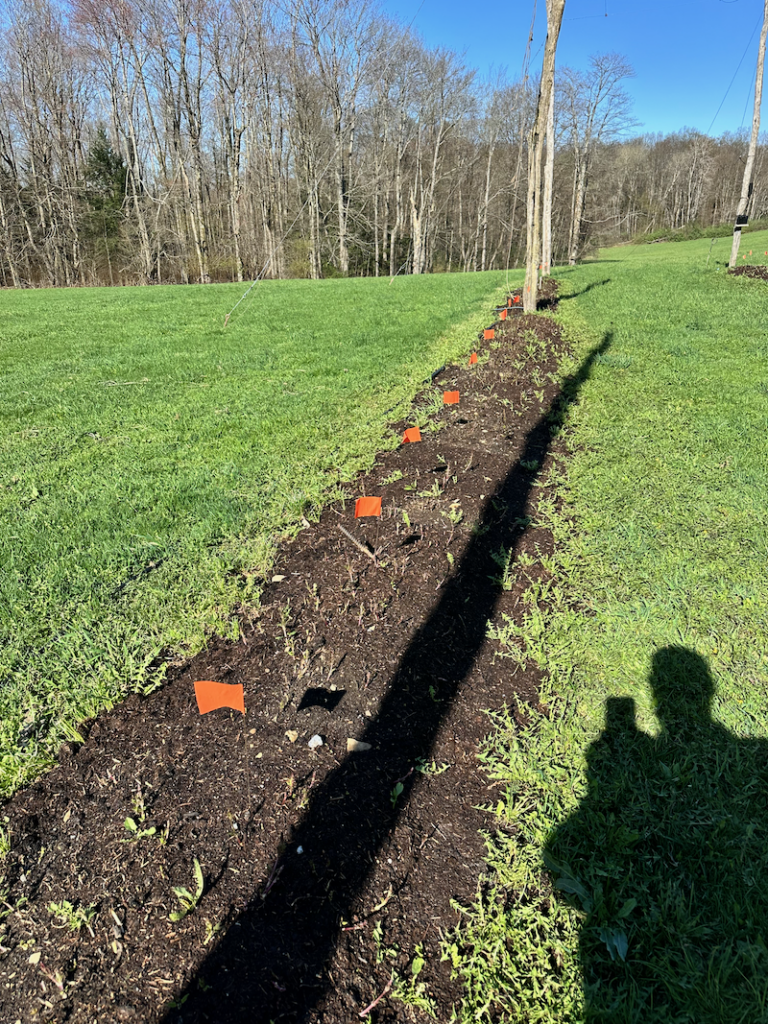
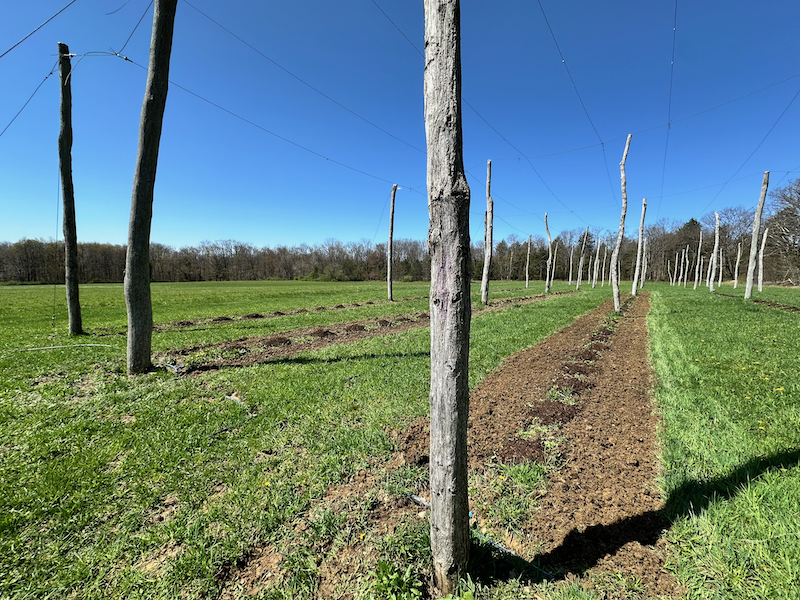
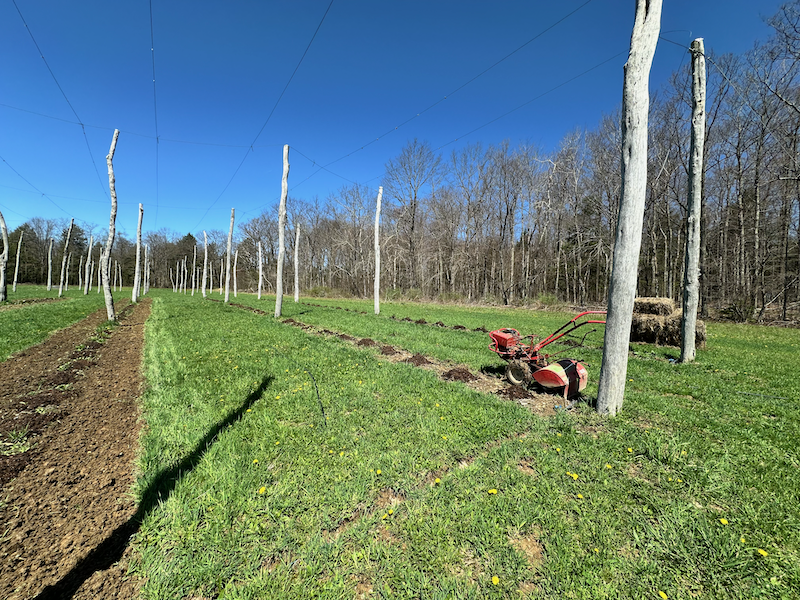
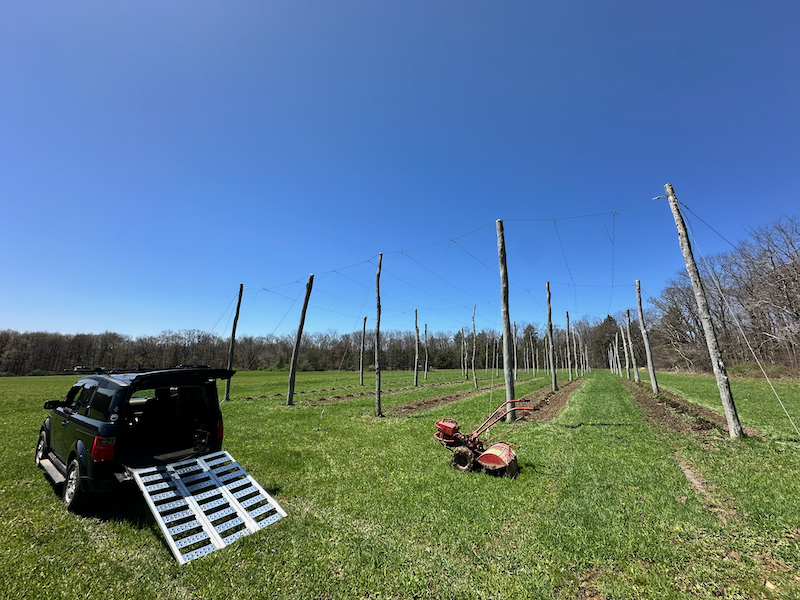
As in most large or commercially designed hop yards, our hop crowns are spaced 3′ apart. Once I’ve gone through and flame weeded, it’s not possible to see at a glance where those crowns are, and that affects dropping and placing the coir. We use the “V-trellis” system and two overhead cables, which means each hop plant gets 4 pieces of coir attached to it.
High above the plants at the cables, two pieces of coir are tied side by side. One side goes to the hop crown on the left, the other to the crown on the right, and that’s mirrored on both parallel cables. So since we try and get the coir hung before the hops start regrowing after flame weeding, we need a visual cue, hence the orange survey flags. In the large yard, where we have about 1/3 of the yard replanted at present, another issue we noticed is that the hills we’d built for the new crowns got mostly washed away, again thanks to a lackluster layer of snow insulating the soil.
Side tillage accomplishes two tasks; first, it creates churned soil that we can then “hill up” on the crowns to help build the organic material protecting the crowns, and second, it then removes weeds that have grown along side the hop hills and helps control the weed growth directly around the hop crowns when we bring that extra soil up and around them.
It Can Stop Raining Any Time Now
Speaking of looking back, it also felt like we’d been getting more rain for this time of year than we had been of late. Various online resources, including our own Davis weather unit, which includes a rain/precipitation measurement tool, showed that we were indeed a few inches above the average for the last five years.
Obviously, crops need rain, just as we all need water, but too much can be bad not just for the crops, but trying to get work done for those crops. Heavier equipment can’t be used as it bogs down in wet, muddy soils. With rain often comes wind and high winds can make work up in the “siege tower” dangerous. Often, working in the rain, a light or moderate rain, is actually quite nice; no bugs, cooler, weeds are easier to remove, and a number of other plusses. It’s when it becomes heavy and is accompanied by higher winds that it really puts a wrinkle in our work plans.
And that in a nutshell has been the 2025 season so far for the most part; wet.
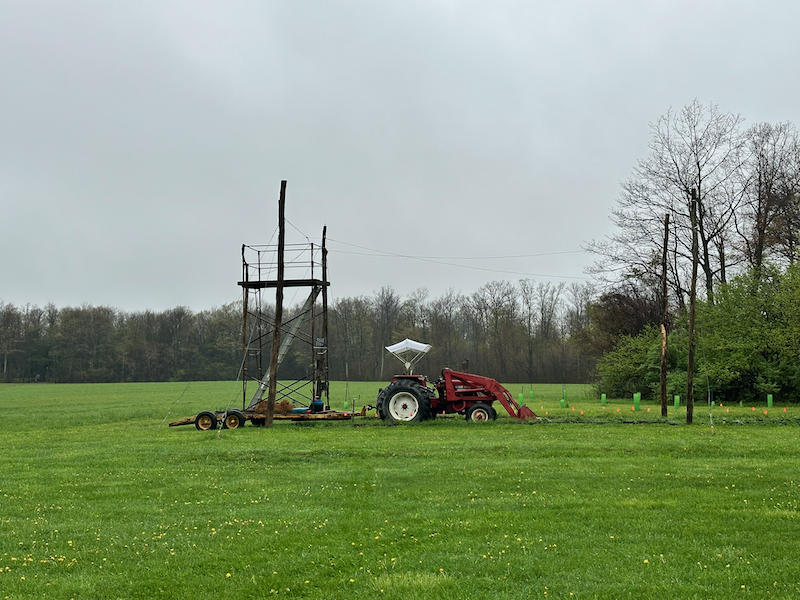
and yesterday, and the day before
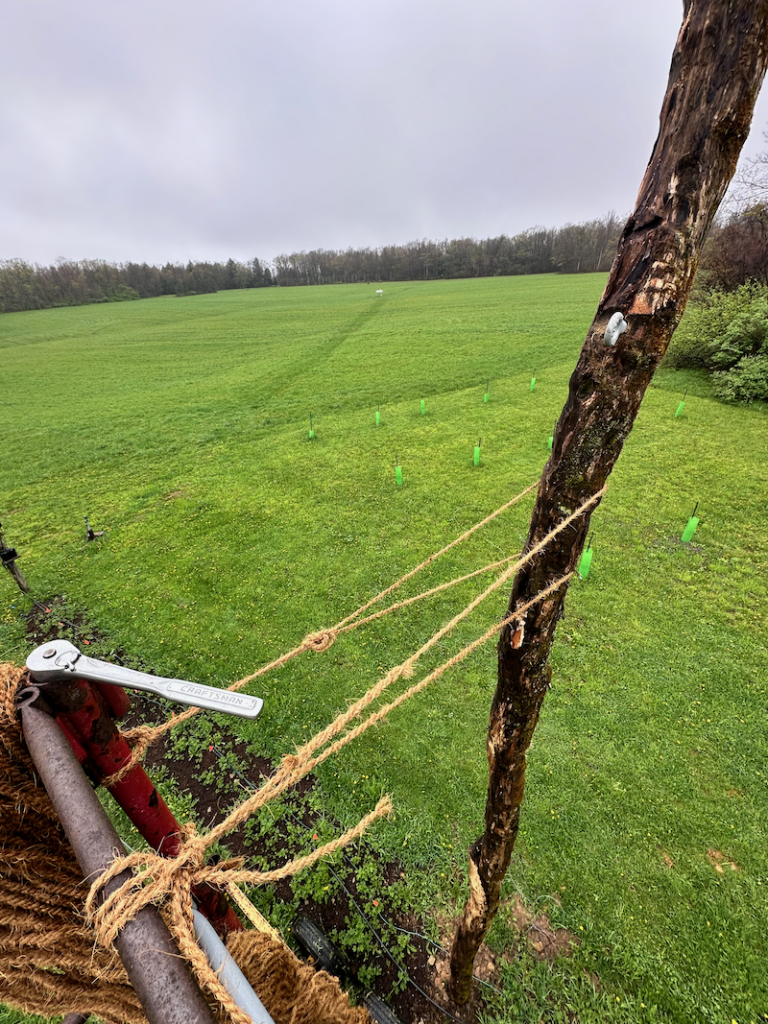
Stringing and Training
The last set of tasks for the pre and early season work is tying the coir to the cables, dropping them to the crowns below, “punching” in the coir next to the crowns with “w” clips, and then training 2-3 bines per each coir. Sounds so quick and simple when you write it down, in reality however, it’s hours upon hours and multiple days of work. In the grand scheme of things, it is probably the most important job of the season as if it doesn’t get done right and within a certain window. enormous problems arise.
As usual, I was grateful to have the help of two of my brothers, Mike and Devin. Neither are particularly fond of heights like I am, but Devin volunteered to join me in the tower for the stringing of the coir to the cables while Mike drove the tractor down below, towing the tower, tying up lines down below, and anything else we needed.
Would it have helped to have at least two more sets of hands? You bet, but it’s hard to find folks willing to do this kind of work, paid or volunteering for it. But here we are – 2025 hop season is underway!

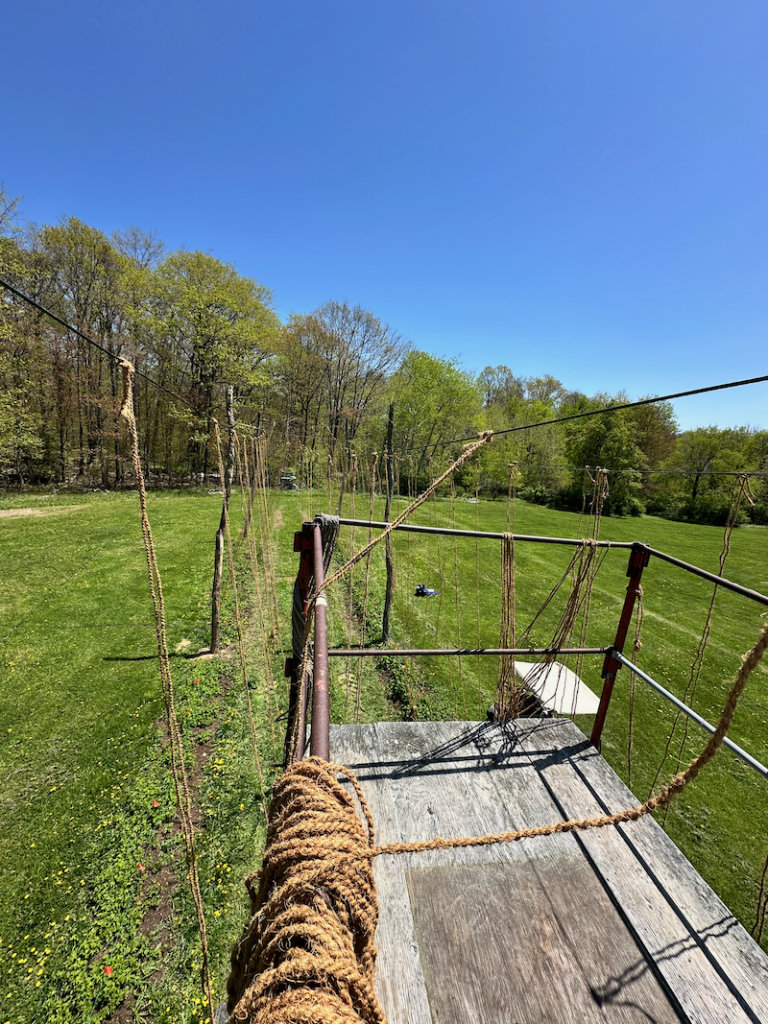
siege tower

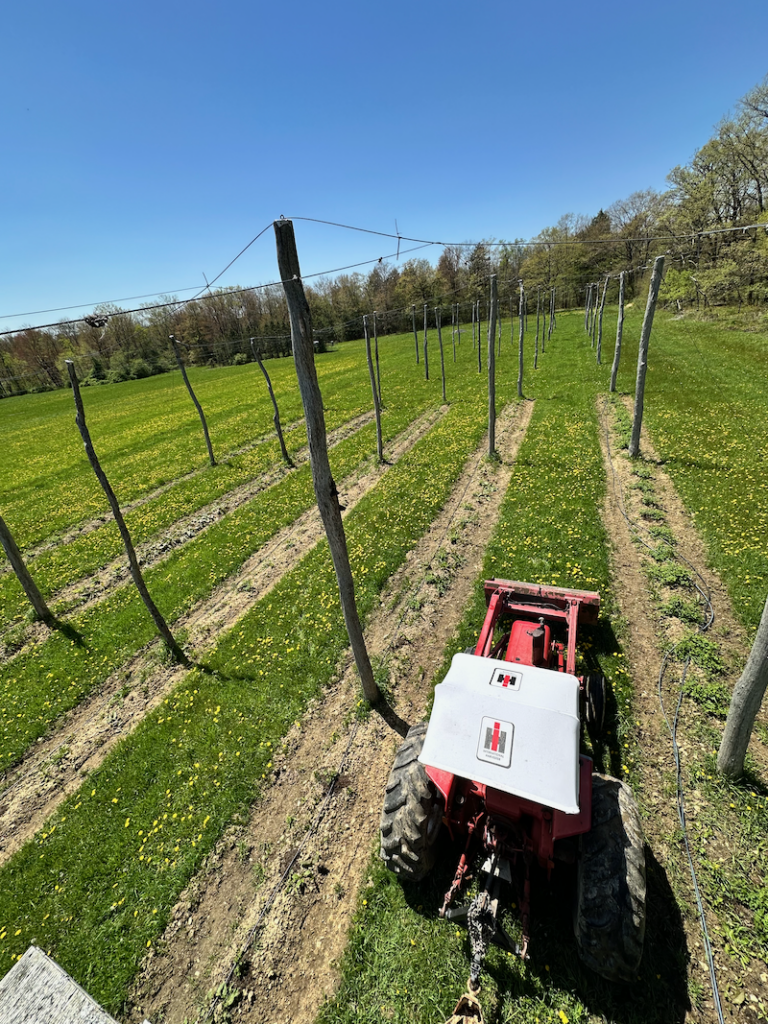
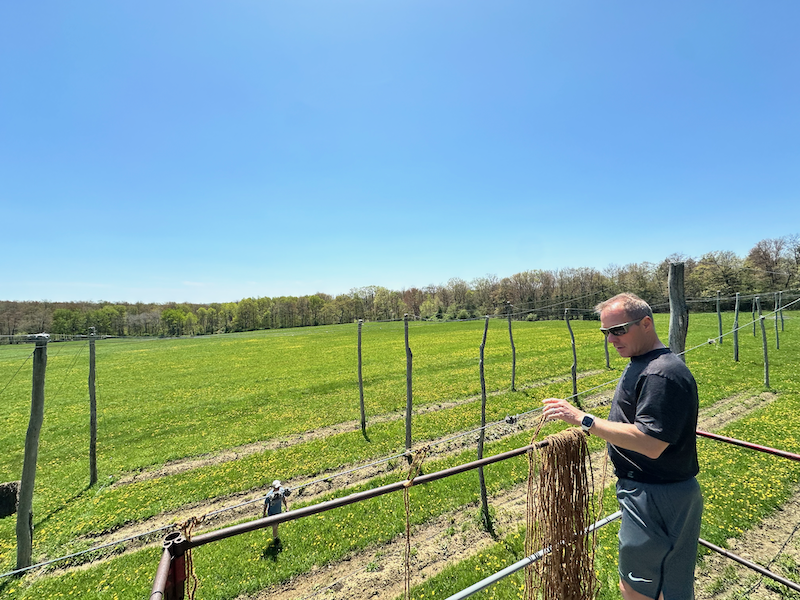
Category: Blog, Hops, Hopyard, Marketing & Social Media, Posts with image Tags: Hop Farm, Hop Farming, Hops, Small Family Farm


Oh my goodness, how could I forget that we had to remove one of the decaying poles and replace it with one of our backup black locust poles? I thought about editing the article, but it gives credence to the fact that unless I write everything down as it happens, I won’t remember when I need it. Great example of it here.
To expand on this event, we knew at the end of last season we wanted to replace the pole in question. It was smaller, spindly, and you could just tell it needed to go. Well as I was flame weeding around it, the base of it actually caught fire, actually the core did. That then made the decision to swap it out alot easier. Not the time we’d wanted to do it, but didn’t matter, it had to be done. And when you replace a pole in a system that’s all tied together, it means you have to redo the overhead wires, anchor cables, etc. The small yard was put in before we really knew what we’re doing, and it’s not set up in an ideal fashion. This also gave us the opportunity to redo the overhead parallel cables which means I no longer have to strap an extension ladder to the outside of the tower to get access to the overhead cables on the outsides.
So that was another “wrench in the works” the moved our schedule back a bit.